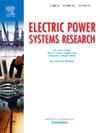一种改进的不平衡状态下vdc - hvdc限流控制方法
IF 4.2
3区 工程技术
Q2 ENGINEERING, ELECTRICAL & ELECTRONIC
引用次数: 0
摘要
在基于电压源变换器的高压直流(vcs - hvdc)系统中,变换器开关阀电流超过额定值的增加以及不平衡故障条件下直流链路电压的波动是最重要的挑战之一。这些问题会大大降低系统的可靠性。现有的解决这些问题的方法往往会增加控制系统的复杂性,并且涉及高计算需求。此外,它们的性能可能不适合所有常见的变压器配置在VSC-HVDC系统。在不平衡故障场景中,本工作提出了一种简单的方法来管理电流并最小化直流链路电压变化。建议的方法成功地将所有典型变压器绕组连接上的电流调节到适当的值。研究了PSCAD/EMTDC系统在双线对地和单线对地故障条件下的仿真。结果证实了所提出的控制方法在双端和多端vdc系统中所有常见变压器配置中的有效性。本文章由计算机程序翻译,如有差异,请以英文原文为准。
An improved control method for limiting current in VSC-HVDC system under unbalanced conditions
An increase in the current of the converter's switching valves beyond their rated value and fluctuations in the DC-link voltage during unbalanced fault conditions are among the most significant challenges in voltage source converter-based high voltage direct current (VSC-HVDC) systems. These issues can significantly reduce the reliability of the system. Existing methods to address these problems tend to increase the complexity of the control system and involve high computational demands. Additionally, their performance may not be suitable for all common transformer configurations in VSC-HVDC systems. In unbalanced fault scenarios, this work proposes a straightforward way to manage the current and minimize DC-link voltage variations. The suggested approach successfully regulates the current across all typical transformer winding connections to the appropriate value. The studied system is simulated under double line-to-ground and single line-to-ground fault conditions in PSCAD/EMTDC. The results confirm the effectiveness of the proposed control method across all common transformer configurations in both two-terminal and multi-terminal VSC-HVDC systems.
求助全文
通过发布文献求助,成功后即可免费获取论文全文。
去求助
来源期刊

Electric Power Systems Research
工程技术-工程:电子与电气
CiteScore
7.50
自引率
17.90%
发文量
963
审稿时长
3.8 months
期刊介绍:
Electric Power Systems Research is an international medium for the publication of original papers concerned with the generation, transmission, distribution and utilization of electrical energy. The journal aims at presenting important results of work in this field, whether in the form of applied research, development of new procedures or components, orginal application of existing knowledge or new designapproaches. The scope of Electric Power Systems Research is broad, encompassing all aspects of electric power systems. The following list of topics is not intended to be exhaustive, but rather to indicate topics that fall within the journal purview.
• Generation techniques ranging from advances in conventional electromechanical methods, through nuclear power generation, to renewable energy generation.
• Transmission, spanning the broad area from UHV (ac and dc) to network operation and protection, line routing and design.
• Substation work: equipment design, protection and control systems.
• Distribution techniques, equipment development, and smart grids.
• The utilization area from energy efficiency to distributed load levelling techniques.
• Systems studies including control techniques, planning, optimization methods, stability, security assessment and insulation coordination.
 求助内容:
求助内容: 应助结果提醒方式:
应助结果提醒方式:


